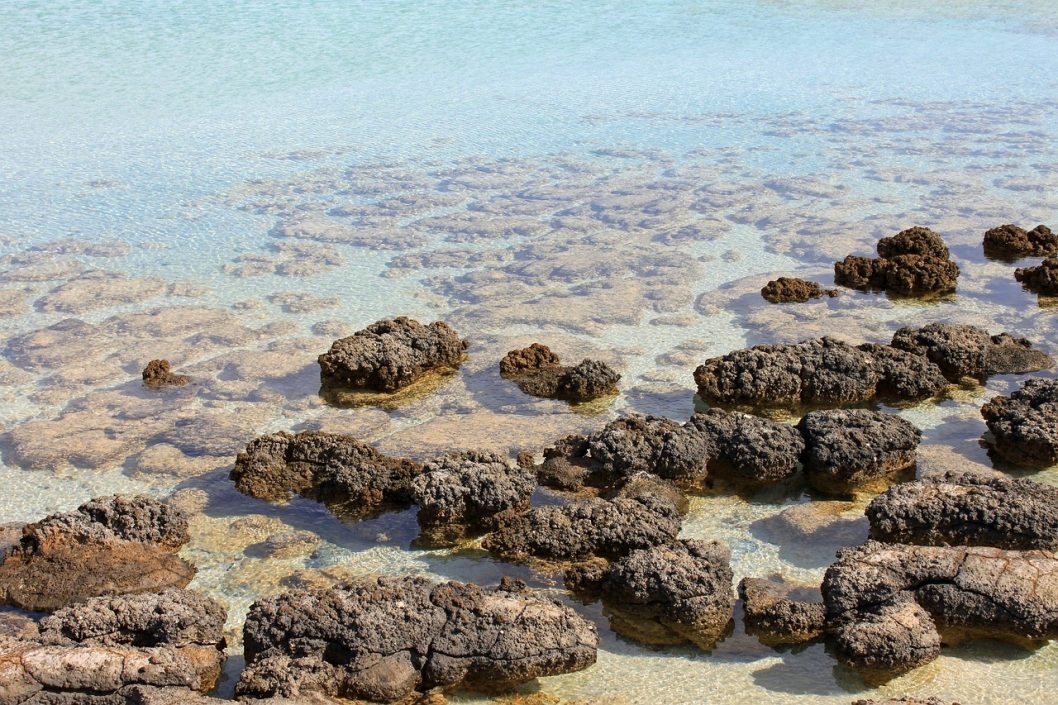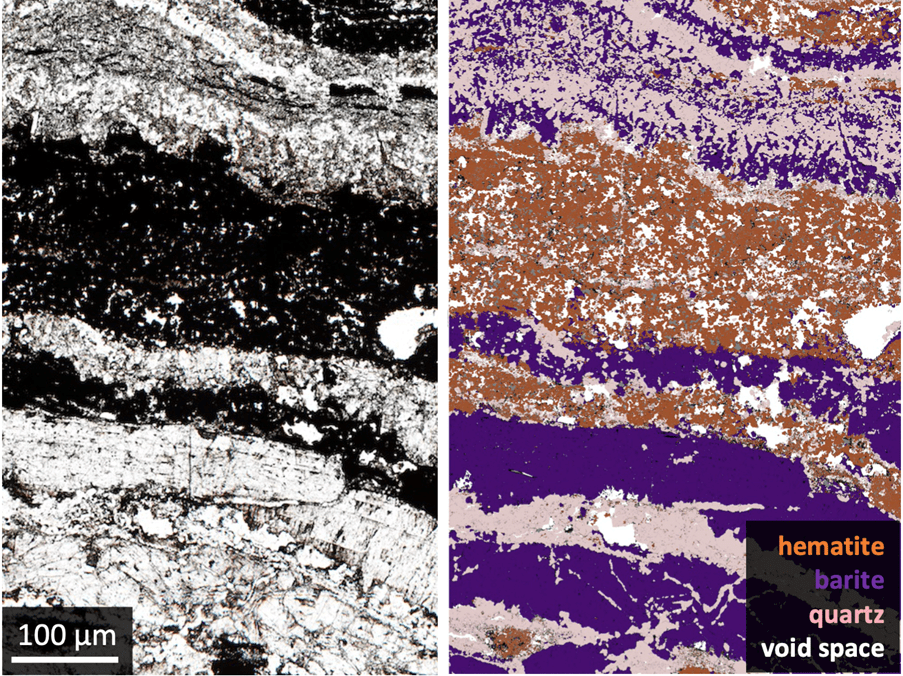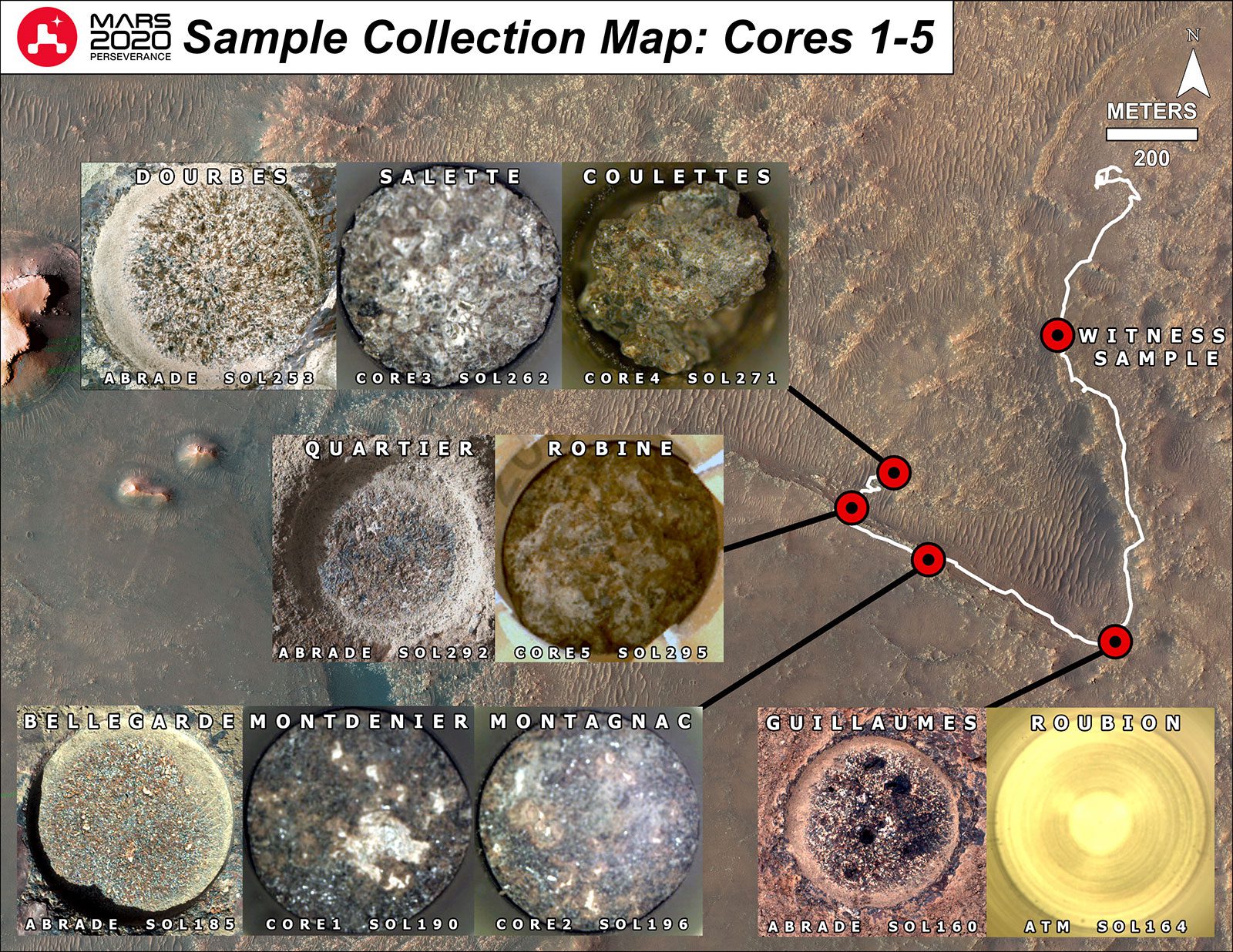Investigating the effects of early life is a very difficult and often controversial task, as many non-biological processes may exist in which similar patterns of life once existed, or because fossils have been altered and rearranged over the course of billions of dollars. Years. This statement is especially true for signs of extraterrestrial life, such as those that can be read from the rocks of Mars.
Stromatolites, these formations formed from many layers and resulting from the interaction between microbes and the environment, have long been considered as remnants on the basis of which we can successfully search for microorganisms in sedimentary rocks. He stated that, despite everything, the biological origin of ancient stromatolites is in question American Geological Society. In the company magazine, the geologyHowever, in a new research finding recently published in
One of the tested rock samples
Source: GSA
The London Museum of Natural History The research group led by Dr Kieron Hickman Lewis carried out detailed analyzes of traces of life found in the sedimentary rocks of the Australian Treasury Formation. The area was a shallow lake 3.5 billion years ago, which, thanks to volcanic and hydrothermal activity, was traversed by nutrient-rich waters. In this water, many microbes carrying out the process of photosynthesis found the conditions necessary for life, almost similar to those that exist. 3 billion years ago, it could have been carried by ancient Martian lakes.
“Although our rock samples no longer contain microfossils or organic matter, many features of their structure indicate a biological origin. With the help of high-resolution analyzes of them, we can convincingly prove that they were formed with the help of life,” said Hickman Lewis.
Cross-sectional image of a rock sample, showing minerals and voids (in white) inside.
Source: GSA
Stromatolites are layered microbial mats that form when microbes secrete sticky substances that hold a variety of bacteria together. (A microbial carpet similar to a biofilm can even be found in our drain, where in the case of hard water, along with lime deposits, their growth can cause an ugly clog.) The upper microbial layers of stromatolites usually carry out photosynthesis, while the inhabitants get The deep layers provide the energy they need to live in other ways. When the layers are built, different minerals are trapped and show a distinctive pattern, and as we have learned from examining the layers of stromatolites living today, we can also identify them in ancient stromatolites.
“The vault-shaped structure, which condenses towards its top, is a sign of the growth of photosynthetic microbes,” the researcher explains. “Microbes don’t grow uniformly throughout the microbial mat, so these structures appear to grow toward nutrients, in this case toward the sun.” There is another distinct growth pattern, a column-like structure separated by flat layers, which can also be associated with microbial activity. According to the researchers, the joint presence of these two types of structures clearly proves the biological origin of this particular rock. The research team analyzed the Australian rocks using the most complex methods that provide a structural picture, and in addition to the elements detailed above, they also mapped cavities formed by gases generated during the decomposition of organic matter.
Just as it clearly indicates the human activity of an archaeologist, if he encounters bricks and gates when excavating the ruins, these special growth patterns also prove the living origin of stromatolites, even if organic matter is no longer detectable in the rocks. In this case, iron oxide (hematite) replaced the particles that were previously traces of life.
The first six rock samples were collected by the roving probe.
Source: NASA
However, examining the composition in the rocks of Mars will also be of great interest. The shift in stromatolites in the cabinet formation may be similar to that which also affected rocks containing possible Martian microbes. For this very reason, the Australian rocks currently being examined may be of particular interest, it may serve as a comparison to analyze the samples that the persistence wagon is still busy collecting, and which, according to plans, by 2033 A complex mission will bring him back to Earth.














































